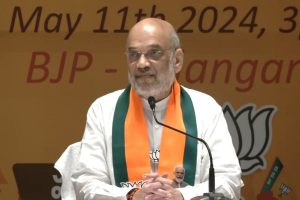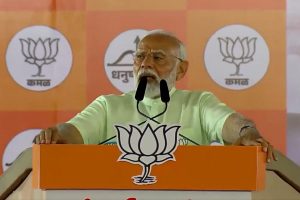Ah, the world of crime fiction, where almost every male detective seems to have a penchant for trench coats, fedoras and a perpetual scowl. They saunter into dimly lit rooms, cigarette smoke curling around them like a halo of mystery, ready to crack the case with their razor-sharp wit and brooding introspection. They are the embodiment of every cliché in the book: the hard-boiled detective with a troubled past, the quirky genius with a penchant for puzzles, has a greenhorn sidekick and let’s not forget the charming rogue with a whim for breaking all the rules. With their trademark catchphrases and a knack for finding clues in the unlikeliest of places, they’re like walking stereotypes in a noir-themed parade. However, our sleuth breaks the mould—she’s a woman. And no, she’s not cut from the same cloth as Miss Marple or Nancy Drew. She’s a Bengali woman — intrepid detective Koel Deb.
Right Angle to Life, penned by Krishnan Srinivasan, a former Indian foreign secretary, plunges readers into the gripping adventures of detective Koel Deb and the enigmatic retired Somali ambassador, Michael Marco. Unlike most detective stories where the sleuths work with assistants, these two do not formally collaborate.
The narrative kicks off with the murder of a prominent movie mogul in the quaint town of Burdwan, drawing Deb to the scene on behalf of the West Bengal government. Simultaneously, the discovery of a seemingly African woman’s body in Bandel prompts the police to enlist Marco’s expertise. As Koel and Michael navigate their respective inquiries, their paths converge, leading to unforeseen revelations. A jumble of intrigue unfolds as the two delve deeper into their investigations. Each encounter and revelation adds layers to the mystery, culminating in unexpected twists and turns that challenge the reader’s perceptions and beliefs.
Advertisement
The narrative in Right Angle to Life isn’t bogged down by a conventional detective’s origin story. The story is told through Deb, a former deputy commissioner with the detective department, who carries the mark of a past shootout – a bionic arm. But here’s the thing: forget the violins. Koel is not looking for sympathy, and her augmented arm is less ‘woe is me’ and more ‘business as usual’. It’s just another tool in her arsenal. It’s refreshing for the reader as the novel avoids dwelling on her physical difference.
The focus remains firmly on Deb’s pursuit of justice, showcasing her intellect and unwavering determination in the face of a complex murder investigation.
While the pages of Right Angle to Life offer little insight into her innermost thoughts and experiences, we’re left to speculate on the books that might line her shelves, the melodies that resonate in her ears and the movies that capture her imagination. However, Srinivasan gets the readers acquainted with the external facets of Koel’s persona—the attire she adorns, the makeup she chooses and her love for the exhilarating freedom of riding her Harley Davidson motorcycle. These glimpses offer a surface-level understanding, allowing readers to appreciate her professional competence and adventurous spirit.
Nevertheless, the depths of Koel’s psyche remain largely uncharted territory within the narrative landscape. There are no soliloquies to unveil the complexities of her thoughts or the whispers of her innermost desires. Instead, she remains a mystery, her actions and reactions painting a portrait of strength and determination, yet leaving the canvas of her soul blank, waiting for the strokes of revelation to bring it to life.
In her role as a private detective, Koel Deb fearlessly embarks on the hunt for evidence, often venturing into the treacherous territories of danger and uncertainty. Meanwhile, Michael Marco, employs his sharp deductive prowess to decipher the cryptic clues and unmask the perpetrators lurking in the shadows.
Yet, amidst the adrenaline-fueled pursuit of justice, the author deliberately steers clear of elaborate descriptions of locales like Kolkata, Burdwan or Bandel. Instead, these settings serve as mere backdrops to the unfolding drama, allowing the characters and their exploits to take centre stage. But, with meticulous precision, Srinivasan crafts vivid descriptions of the physical attributes of the characters within the pages of the book, allowing readers to effortlessly conjure images of these figures in their minds.
The book passionately delves into the realm of feminism, shedding light on the myriad injustices that plague society and undermine the dignity of the female form. With unflinching candour, it exposes the pervasive culture of objectification and degradation that women face, confronting head-on the myriad ways in which their bodies are commodified and devalued.
The police’s knack for being about as helpful as a chocolate teapot isn’t lost on anyone, especially in the pages of a detective novel where they’re more likely to miss the mark than hit the bullseye. Srinivasan doesn’t just paint by numbers; he gives his characters agency, acknowledging that behind every crime, there’s often a tangled web of human desires gone awry—be it a lust for lucre or a thirst for vengeance.
As the final chapter draws to a close, like a cryptic crossword puzzle solved with a wink and a nod, the book leaves us with more questions than answers, challenging us to rethink our preconceptions. Through the lens of wit and whimsy, it makes us question the status quo and to unravel the complexities of morality and motive.
Advertisement











